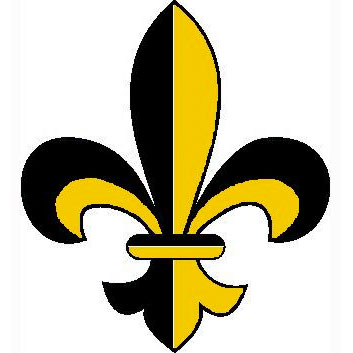 Fleur-de-Lis: also known as the Merovingian Lily, the three-pronged flower-head was as very sacred symbol, (of the goddess Juno - the Lilly Maid, mother of war god, Mars), used by the early Gauls and the powerful Salian Frankish dynasty that reigned across France from circa 481 to 751, and continued as the representation of France by the Normans. Used in many other European coats of arms during the Middle Ages, the Fleur-de-Lis also had martial as well as religious connotations. The Roman Catholic Church decreed that it should be the emblem of the Virgin Mary and therefore symbolic of the holy bloodline, or Sangraal, while the three petals of its flower are thought to represent not only the Holy Trinity, but also the Christian values of faith, wisdom and chastity. However, the Lilly’s meaning holds striking duality and affinity to Mars, as well as the values of war; Joan of Arc carried the Fleur-de-Lis on her flag as she rode with her French troops to victory in battle, while the military often interpret its shape into that of an ornate, upright spearhead – indicating power, fearsome force and brute strength.
Fleur-de-Lis: also known as the Merovingian Lily, the three-pronged flower-head was as very sacred symbol, (of the goddess Juno - the Lilly Maid, mother of war god, Mars), used by the early Gauls and the powerful Salian Frankish dynasty that reigned across France from circa 481 to 751, and continued as the representation of France by the Normans. Used in many other European coats of arms during the Middle Ages, the Fleur-de-Lis also had martial as well as religious connotations. The Roman Catholic Church decreed that it should be the emblem of the Virgin Mary and therefore symbolic of the holy bloodline, or Sangraal, while the three petals of its flower are thought to represent not only the Holy Trinity, but also the Christian values of faith, wisdom and chastity. However, the Lilly’s meaning holds striking duality and affinity to Mars, as well as the values of war; Joan of Arc carried the Fleur-de-Lis on her flag as she rode with her French troops to victory in battle, while the military often interpret its shape into that of an ornate, upright spearhead – indicating power, fearsome force and brute strength.
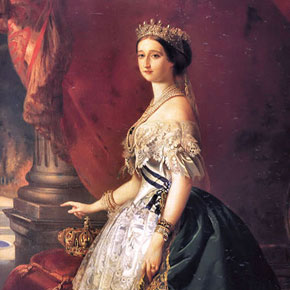 Empress Eugenie: Born in Granada, Spain, Eugénie de Montijo was the last Empress Consort of the French between 1853 and 1871, and husband of Emperor Napoleon III. While their marriage was thought to be questionable due to it being a love match – not arranged for any diplomatic purpose – and she was treated with some contempt by her people, Eugénie proved to be a wise and fair consort, often acting as Regent in Napoleon’s absence. In fact, so enamoured was Napoleon of his wife that he presented her with a lavish wedding gift; the Blue Heart, or Empress Eugénie Diamond. Influencing the trends of fashion throughout Europe, she also proved to be a strong advocate for the papal temporal powers in Italy, which caused her much slander by the anti-clericals of France. After the battle of Sedan and the capture of her husband, Eugénie fled Paris and went into exile, where she lived out the rest of her days.
Empress Eugenie: Born in Granada, Spain, Eugénie de Montijo was the last Empress Consort of the French between 1853 and 1871, and husband of Emperor Napoleon III. While their marriage was thought to be questionable due to it being a love match – not arranged for any diplomatic purpose – and she was treated with some contempt by her people, Eugénie proved to be a wise and fair consort, often acting as Regent in Napoleon’s absence. In fact, so enamoured was Napoleon of his wife that he presented her with a lavish wedding gift; the Blue Heart, or Empress Eugénie Diamond. Influencing the trends of fashion throughout Europe, she also proved to be a strong advocate for the papal temporal powers in Italy, which caused her much slander by the anti-clericals of France. After the battle of Sedan and the capture of her husband, Eugénie fled Paris and went into exile, where she lived out the rest of her days.
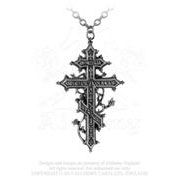 Balkan Revenant’s Cross: Also known as Crux Orthodoxa, the Eastern Orthodox Cross, and as a variant of the Greek Orthodox or Patriarchal Cross. It is most often seen in Russia, Ukraine and other Slavic countries. Traditionally, the top beam is inscribed with ‘Jesus of Nazareth, King of the Jews’, as well as its Latin abbreviation (INRI) and Russian abbreviation (INBI). It is believed that the slanted lower bar represents the footrest upon which Jesus’ feet were nailed; reflecting the repentant thief and the unrepentant thief that were crucified alongside him. The penitent criminal to the right ascending into heaven, while the unapologetic man to his left falls into the fires of hell, as well as eternal separation from God. As such, it is also meant to serve as a reminder of the Final Judgement.
Balkan Revenant’s Cross: Also known as Crux Orthodoxa, the Eastern Orthodox Cross, and as a variant of the Greek Orthodox or Patriarchal Cross. It is most often seen in Russia, Ukraine and other Slavic countries. Traditionally, the top beam is inscribed with ‘Jesus of Nazareth, King of the Jews’, as well as its Latin abbreviation (INRI) and Russian abbreviation (INBI). It is believed that the slanted lower bar represents the footrest upon which Jesus’ feet were nailed; reflecting the repentant thief and the unrepentant thief that were crucified alongside him. The penitent criminal to the right ascending into heaven, while the unapologetic man to his left falls into the fires of hell, as well as eternal separation from God. As such, it is also meant to serve as a reminder of the Final Judgement.
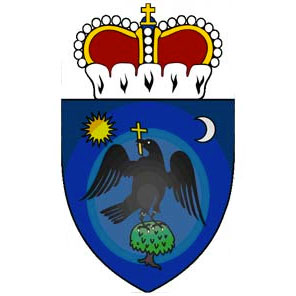
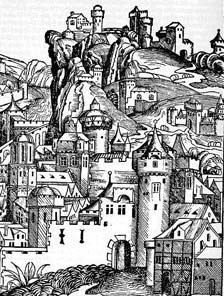 Wallachia: an independent medieval principality, traditionally founded in 1290 by Transylvanian settlers under The Black Voivode, and with allegiance to neighbouring Hungary. From 1310-1352 Wallachia was ruled by Basarab I, who was also known as The Founder for his rebellion against Hungary and the formal establishment of the principality.
Wallachia: an independent medieval principality, traditionally founded in 1290 by Transylvanian settlers under The Black Voivode, and with allegiance to neighbouring Hungary. From 1310-1352 Wallachia was ruled by Basarab I, who was also known as The Founder for his rebellion against Hungary and the formal establishment of the principality.
From around 1415 Wallachia was annexed by the Turkish Ottoman Empire, with whom, under duress, it remained until the 19th century.
One of Wallachia‘s most famous rulers and insurgents was Vlad Tepes, Prince of Wallachia or Vlad III Dracula, the Impaler, so named for his cruel custom of exacting torturous death upon his enemies. Vlad Dracula was intermittently voivode, (ruler), of Wallachia around the period 1456 to 1462, during which he constantly and ferociously fought against Turkish rule.
Wallachia, also colloquially known as Muntenia, was in 1859 merged with Moldavia to become what is now the southern region of modern Romania.
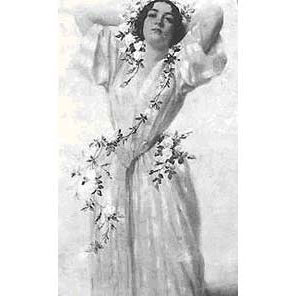 Sabatier, Apollonie: French courtesan and thought-of as the muse for many artists, Apollonie owned a salon in 1850s Paris, in which she entertained the likes of Gustave Flaubert and Victor Hugo. Most notably, she was the inspiration for Charles Baudelaire’s famous poems, Les Fleurs du Mal.
Sabatier, Apollonie: French courtesan and thought-of as the muse for many artists, Apollonie owned a salon in 1850s Paris, in which she entertained the likes of Gustave Flaubert and Victor Hugo. Most notably, she was the inspiration for Charles Baudelaire’s famous poems, Les Fleurs du Mal.
To purchase Alchemy Gothic products visit the Alchemy Dealer List - Trade Customers visit www.alchemyengland.com
Copyright Alchemy Carta Ltd. Alchemy Gothic is a registered Trademark, All Rights Reserved. Privacy Policy. Site Map. Friends of Alchemy.